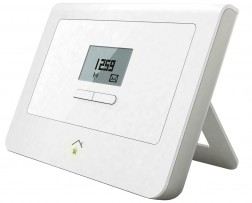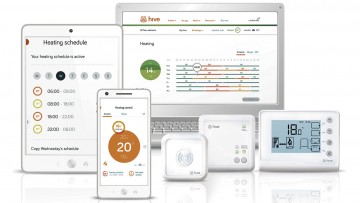Modern-day utility companies face a host of challenges. The industrialised electricity markets in Europe and North America are currently supported by ageing infrastructure that requires significant investment to combat potential energy losses across grids. Theft of power remains a big issue. According to Accenture, around $6-billion-worth of electricity is stolen in the United States each year.
The continued opening up of energy markets, particularly across Europe, is increasing the churn of customers which, in turn, is putting pressure on utility companies’ ability to find operational efficiencies or to innovate.
These challenges are compounded by tough decarbonisation targets. At least 67 countries around the world now have renewable energy policy targets – a government-imposed legislative requirement on electricity retailers to source specific proportions of total energy sales from clean energy sources within a fixed time-frame. The European Union has set a goal to generate 20 per cent of energy from renewables by 2020, for example.
As a result, more and more distributed and intermittent green energy is being plugged into national grids. By 2025, more than 10 per cent of electricity will be micro-generated by consumers, according to Verizon. That’s good news for target-setters. But it adds layers of complexity for utilities getting to grips with supply and demand in a fast-changing sector.
By connecting physical devices over the internet, technologies such as smart meters and sensors can ‘talk’ to each other – and communicate both with utilities and their consumers
The development of a smarter grid, which uses information and communications technology to gather data, such as energy consumption information, and to act on it in an automated way to improve efficiency and reliability of supply, has long been cited as a panacea for the future success of utility supply and distribution.
Aided by policy intervention, the roll-out of smart-grid technology is happening across Europe and North America. According to Navigate Research, 94 million smart meters were shipped worldwide last year and the total number installed is set to reach 1.1 billion by 2022. In the UK, GB Smart Grid estimates £19 billion of savings might be achieved in the energy sector by upgrading the network to a smart grid.
Today, smart meters are being used to gather data largely for billing purposes. However, this data contains a wealth of information that can help utilities and their consumers in many ways. And it is the advent of the internet of things (IoT) that could really spark life into smart-grid potential.
By connecting physical devices over the internet, technologies such as smart meters and sensors can “talk” to each other – and communicate both with utilities and their consumers.
In the homes of the future, light switches, televisions, power sockets and air conditioning units will be linked up to the internet. Sensor and actuation systems will be integrated into the same systems, connected to the same internet, making it easier for utilities to balance power generation with energy usage by turning things on and off based on occupants’ behaviour.
According to Nest, makers of “learning” thermostats, domestic energy consumers in the UK are currently wasting up to 20 per cent on their heating and cooling bills due to inefficient scheduling. British Gas estimates that 7.8 million empty homes are being heated every year. Better connected systems can help to alleviate this problem by putting greater power into the hands of residents, who will be able to control their heating appliances or washing machines remotely via cloud-based internet programmes, or by creating their own schedules to determine when certain devices are turned on and off. Some devices even have the ability to “learn” consumer behaviour and build personalised schedules.
Many of these devices, such as the British Gas Hive, RWE SmartHome and Google Nest, have already been launched. And the market potential for utilities is clearly huge. According to IDC’s Worldwide Internet of Things Spending forecast, the global revenue opportunity presented by the IoT for the utilities industry is around $201 billion by 2018. In the UK alone, the 26.4 million households represent a £1-billion market, assuming that 20 per cent of households opt to buy a British Gas Hive device at around £200.
By investing in technologies that give consumers more control over how they save money, utilities are improving customer relationships and protecting brand loyalty, something that is becoming more valuable in liberalised utility markets. Around 30 per cent of the 50,000 British Gas Hive customers are using 10 per cent less energy or heating thanks to the technology. What more incentive do they need to stick with their supplier rather than switch in search of money-savings? The growth in small-scale home energy generation and the use of electric vehicles is likely to further fuel the market by the end of the decade.
Dealing with larger-scale commercial energy use is also being tackled by smarter connectivity. Companies such as Kiwi Power and Open Energi are helping business customers realise the benefits of having access to more data. When the UK’s National Grid requires extra capacity, its internet-connected systems “talk” to these two energy aggregators to find out which of their clients has some spare energy that can be used, rather than powering up another power plant and giving utilities another supply-and-demand headache.
Similarly, the cloud-based platform Tradenergy controls entire business sites, determining how and when certain industrial refrigerators, air conditioning units or heating systems are using energy, and taking full advantage of market price fluctuations.
However, it is not just about helping consumers save energy and money. Utilities also have an opportunity to solve some of their large-scale operational, maintenance and distribution challenges. For example, sensor data and advanced analytics can be used to predict when critical components might fail, helping to avoid costly breakdowns, and interrupted energy and water supply. In addition, heightened monitoring and control will make it easier to detect, and act upon, energy loss or theft.
Of course, challenges will remain. Connected technology that carries consumer data possesses a certain amount of risk and, should security be breached, any brand loyalty a supplier has garnered will be firmly eradicated. Companies will also need to create a positive user experience if they are to gain ground and not undermine consumer confidence.
The good news for utilities is that the cost of interconnecting devices is falling. By 2020, some 30 billion smart, wirelessly connected devices will be in operation in homes and the utilities industry worldwide, accounting for 67 per cent of all machine-to-machine connections worldwide by 2023, according to Analysis Mason. In turn, it will create a wealth of opportunities for the sector to reduce risk within the supply chain, improve operational efficiencies and develop a truly smart grid fit for the future.
And by getting closer to their customers, the industry has a chance to increase revenues by helping consumers save on their utility bills. Who would have thought that?


